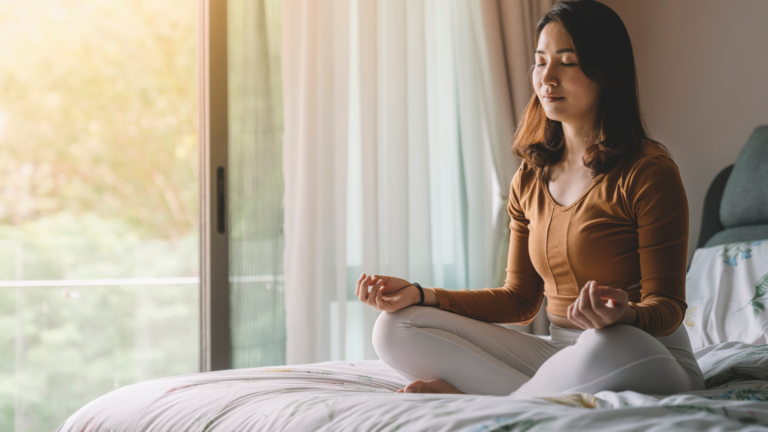Julie Hayes is the Content Manager at Benjamin Rose Institute on Aging.
When you’re not able to see an older loved one as often as you would like, it can be difficult to stay apprised of his or her mental and physical health. It’s natural to have anxiety over a host of possible issues. You may fret over the safety of your loved one’s living environment. Or you may wonder whether hiring an in-home care aide could help. Is it possible your loved one has experienced memory loss? Are there any indications of dementia? This can be particularly challenging for long-distance caregivers—who make up roughly 15 percent of all family caregivers—and those who have been separated from loved ones because of Covid-19 restrictions. But whether you’re near or far, it’s important to take careful stock of what’s going on whenever you spend time with your loved one.
Perhaps you spotted some troubling signs during holiday visits and want to keep a close eye on them. Or you may just want to know more about what to look for to keep your loved one safe moving forward. It can be helpful to ask yourself the following key questions during any visit with your older loved one:
- “Are there changes in physical appearance?”
Physical changes are a natural part of the aging process, but it’s important to pay attention to certain changes that can indicate serious issues. Keep in mind that:
- Increased weight loss can indicate that your loved one is ill, malnourished or depressed. Likewise, sudden weight gain may also indicate illness or depression, or that your loved one isn’t getting enough exercise or healthy food.
- Neglected grooming can mean that your loved one is ignoring basic needs. If you notice that he or she hasn’t bathed, has unwashed or unkempt hair, or is wearing clothing that needs to be washed, it can indicate your loved one is self-neglecting.
- Bruises, cuts or injuries can be evidence of elder abuse, particularly if your loved one is hesitant to explain where they came from. These signs can also point to a fall, or that an accident incurred while preparing a meal.
- Symptoms that are played down, such as a chest cough, an abnormal skin spot or a persistent stiff shoulder may indicate a more serious health issue.
- “Are there behavioral changes?”
Even though everyone matures and grows as the years go by, personality and behavior generally remain stable unless there is a serious issue. So, it’s important to notice sudden and unexpected changes. During any visit with your loved one, keep an eye out for:
- Indications of sadness, decreased interest, expressions of hopelessness or lack of motivation and energy. All are common symptoms of depression in older adults.
- Trouble tracking conversations or remembering things, confusion, new difficulties with talking or selecting words, or unexplained personality and behavior changes and challenges. Each are common early signs of dementia.
- Squinting, light sensitivity, tripping, or problems with reading or spotting far-away objects. These can be signs of vision loss. It’s important to make sure your loved one is treated for vision loss, as it’s a falling hazard.
- “Are there changes in the living environment?”
An older adult’s home is central to his or her life, and can be a strong indicator of wellness. As people age, getting around the home can become more of a challenge, and objects that previously posed minimal risk—such as stairways, electrical cords and rugs—can pose real hazards. It’s important to address such safety issues, but they are not necessarily symptoms of troublesome changes in wellness.
When evaluating your loved one’s home, it’s important to look for what’s different and unexpected, like:
- A greater degree of clutter, unnecessary items that are piled up or signs that he or she has a hard time getting rid of things
- An environment that’s generally more unclean, and chores that haven’t been completed as before
- A kitchen that’s less well-stocked, or that has moldy or expired food
- Things that have been put away in unusual spots
- Expired medications that haven’t been refilled
There can be many causes for such changes in the home, including dementia and other forms of memory loss. On the other hand, they may be signs of self-neglect or of pain or illness, making chores or organization impossible or difficult. Hoarding disorder can also become more severe with age.
In order to get the best idea of your loved one’s well-being during a visit, it’s important to take into consideration changes in each of these three areas: physical appearance, behavior and living environment. Getting additional feedback from friends, family members and others who see your loved one on a regular basis can add more information. Finally, don’t forget to speak with your loved one about any challenges. Although he or she may be reluctant or unable to discuss these issues, make sure to try.
If you’ve spotted any troublesome signs, the next step is to reach out for whatever help is necessary. The sort of help you seek will depend on the situation, but making an appointment with your loved one’s primary care doctor for an overall check-up is a good way to begin. You can also explore local services and resources. Consider visiting your local Area Agency on Aging or visiting the Eldercare Locator to find assistance in your community, including social work support, home assessment services and mental health treatment.




